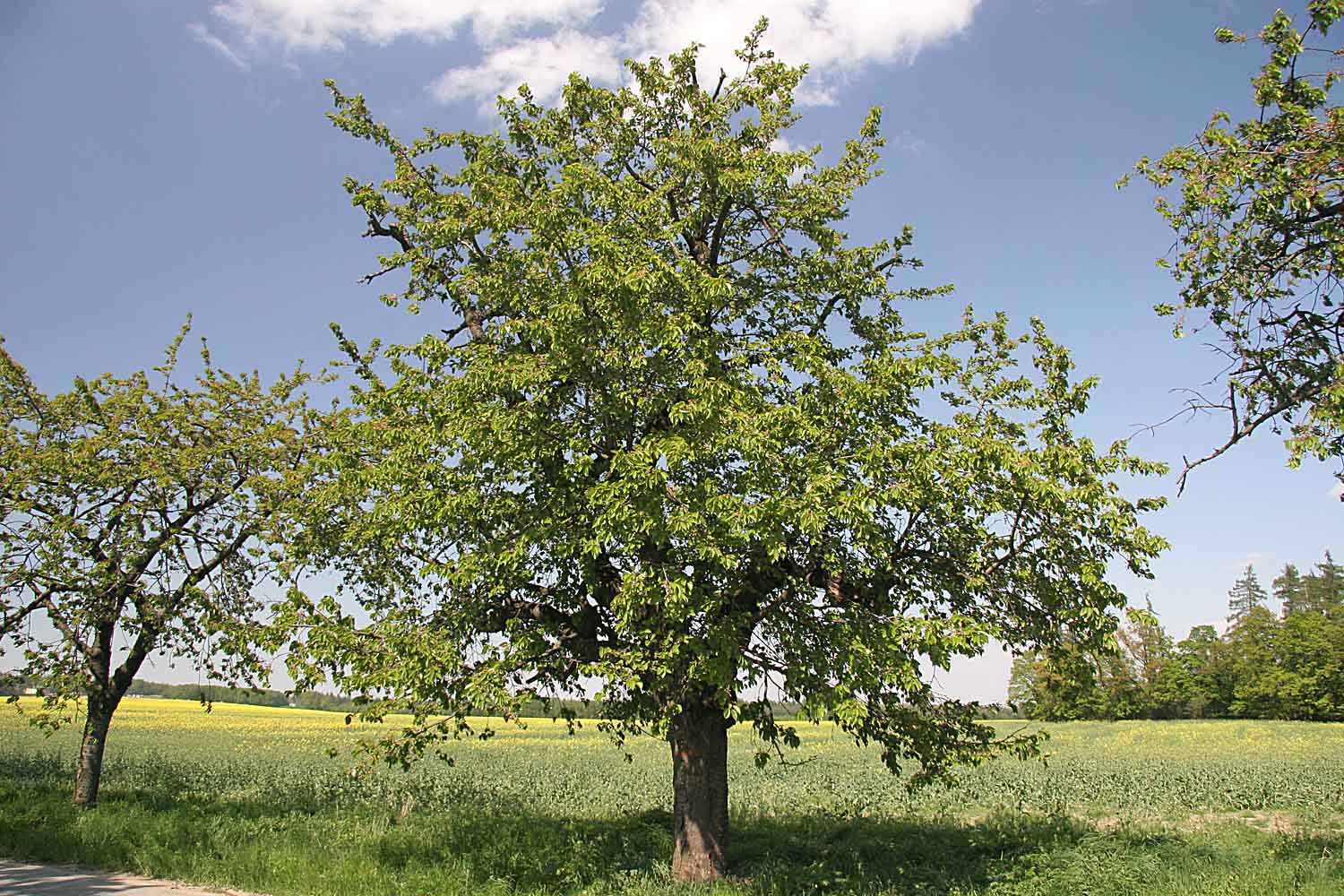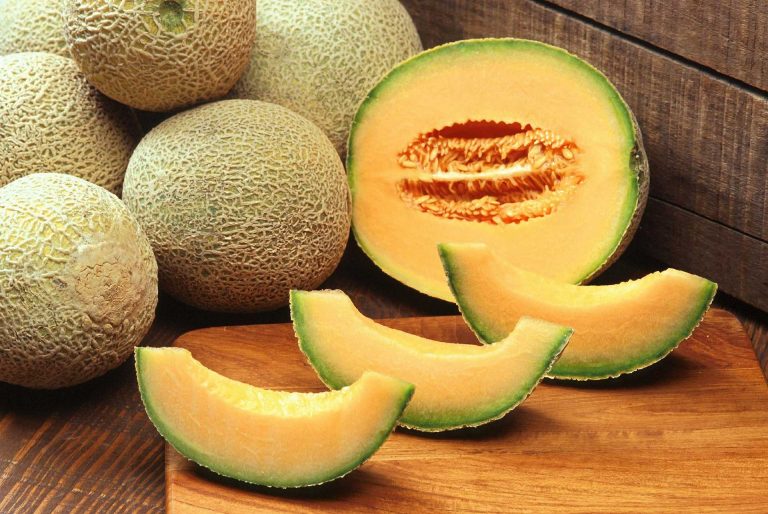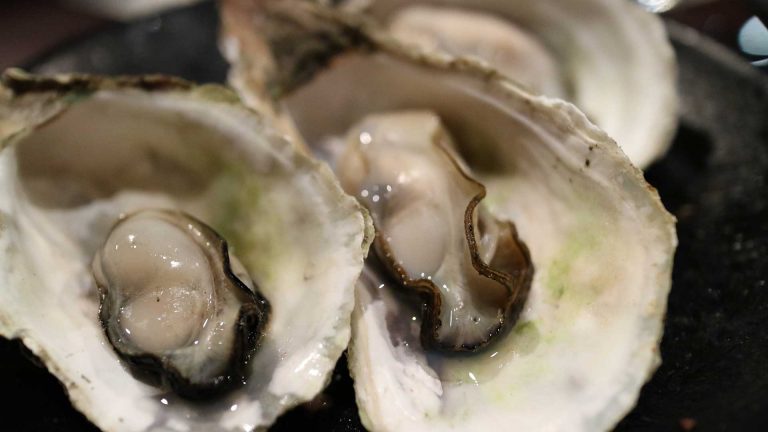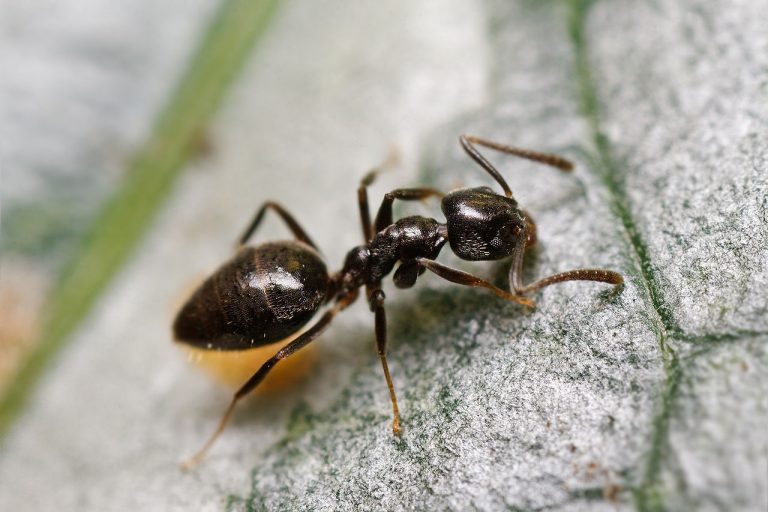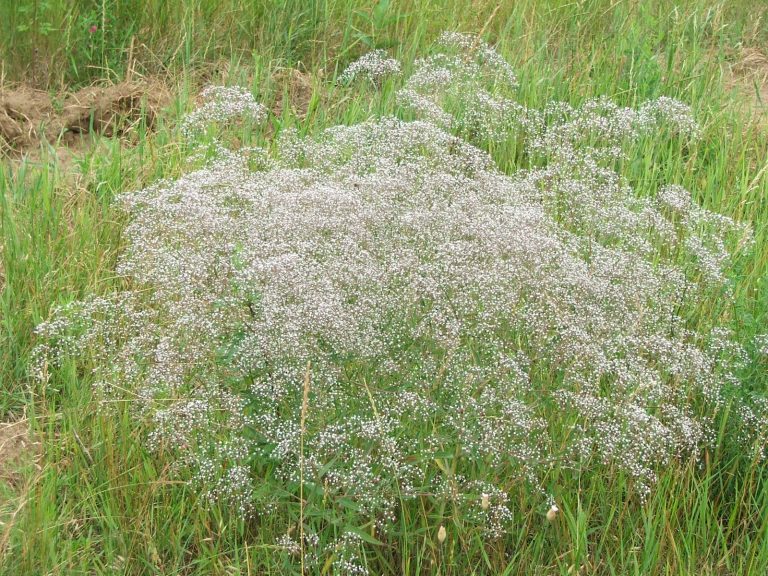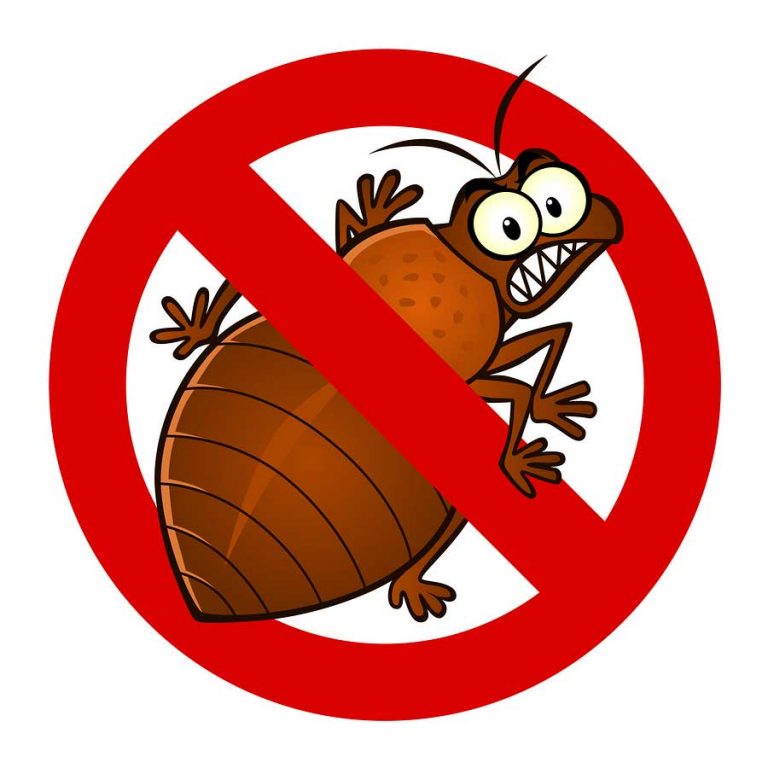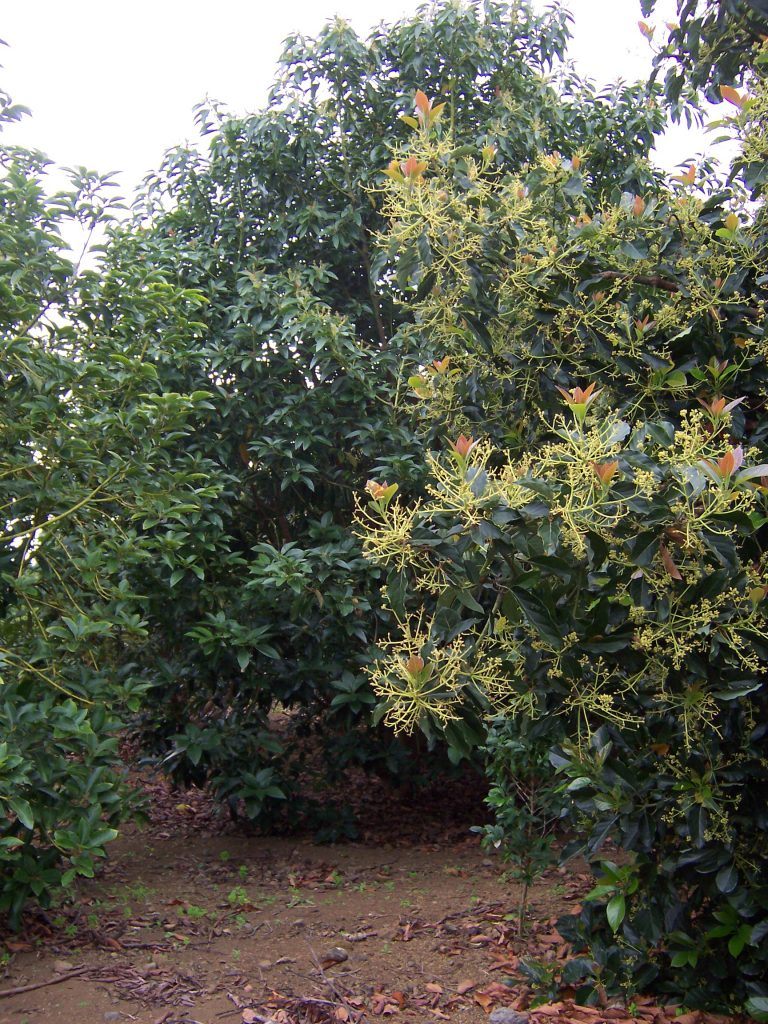Cherry Tree
Scientific Classification
| Kingdom: | Plantae |
| (unranked): | Angiosperms |
| (unranked): | Eudicots |
| (unranked): | Rosids |
| Order: | Rosales |
| Family: | Rosaceae |
| Genus: | Prunus |
| Subgenus: | Cerasus |
| Species: | P. avium |
There are many kinds of cherries available in the market. Some are edible cherries and others are wild cherries. The fruit-cherry is the fruit of many plants that comes from the family of the genus Prunus, and they are Stone Fruits or you can call them Fleshy Drupes. The edible cherries are obtained from cultivators from all over the world. The name cherry has been derived from trees that bear cherry and applies to almonds as well. The flowers of both the cherry and the almonds are very similar. The flowers of the genus Prunus and the ornamental plant are similar, although the ornamental variety does not bear fruits. Wild species that grow outside the cultivation never grow fruits. The cherry is sweet and has multipurpose uses.
History
Some botanical historians of the 19th century interpreted Pliny’s writings to mean that the cherry trees had their origin in western Asia. Archeological finds, however, proved otherwise. The excavation of seeds dating back to pre-historic Europe negated this view and proved the existence of the cherry trees for thousands of years. Scientists have found the stones of the cherry fruits in the settlements of the Bronze Age in the UK and all over Europe.
Anatomy
The cultivated Cherry Trees grow to about 100 feet in height and is a deciduous by nature. It has a straight trunk that measures 5 feet or 1.5 meters in diameter and a dominant conical symmetrical crown at the apex in the young trees that become irregular / round in the older trees. Additionally, the young trees have a smooth bark, with a purplish-brown color, and lenticels that bear a brownish-gray color. When older, the bark fissures and turns blackish-brown. The leaves have a size of 7-14 centimeter or 3 to 6 inches length, 4-7cm or 2 to 3 inches breadth, with matt green above and a downy below. The leaf edges are serrated tapering to a point towards the tip. The reddish or green petiole has 2-5 red glands and measures 0.8 to 1.4 inches or 2-3.5 mm long. The leaves turn red, pink or orange in autumn. Early in spring, you can see the new flowers and the fresh leaves. Corycombs bear 2-6 flowers together on peduncles. Each flower has 5 white petals on yellow stamens, an advanced ovary and the bees pollinate them (hermaphroditic). The drupe/fruit measures 1 to 2 centimeters in diameter or larger that are dark purple to dark red in midsummer when they mature. The fruits contain a stone that measures 8-12 millimeters in length, 7-10 millimeters in width and 6-8 millimeters in thickness. The stone encloses a seed that measures about 6-8 millimeters in length.
Habitat
You can see several cherry varieties like the Prunus Avium, that people also call the sweet, wild or bird cherry or even Orgean. These are native to Anatolia, Maghreb, Europe and Western Asia. They also grow in the UK, Morocco, Tunisia, Norway’s Trondheimsfjord region, the Caucasus, Northern Iran and in the Himalayas.
Of special mention are the orchards of the people who live in the mountains of the Shenandoah National Park, established in 1930, just 75 miles from Washington DC, where they grow a large number of cherries. The people who have settled down in these areas grow cherries in great quantities for consumption.
Growing At Home

Photo by: Benjamin Gimmel
Watering
The sweet cheery plant can grow in medium soils like that in the garden and if we feel that their roots are not holding tight enough and they are loose like a root ball, then it is clear that the sweet cherry plant was initially grown in cans evidencing that the bare roots were probably potted in the early part of spring. When you grow the cheery plant in containers, then you have to water them once a day, and when the sun is hot, twice a day. You can later transfer the plant from pots or containers to the ground and water them, manure them and take care of them. As soon as the plant is transferred, proper care has to be given. Only if the plant is watered daily, the roots will catch up. After the first two weeks, you can reduce the watering intervals. As the plant grows, you can pay less attention to it. Check on the water level and dryness in the soil, and provide water appropriately. The presence of yellow leaves is an indication that more care has to be given to the plant and the plant is in stress. After a month you can reduce the watering frequency to once a week and that will be sufficient for the plant to stay healthy and happy.
Temperature
We all know that the flowers or the blossoms are the ones that turn into fruits. Most of the sweet cherry trees need a good amount of winter and coolness to produce more blossoms or flowers. The more the flowers, the better you will find the harvest of the fruits. The cherry tree needs a time period called as the chill time that can be accumulated throughout the winter season. The chill periods are the time periods when all the leaves fall from the plant and the first flower blooms. To grow into a healthy tree and produce more number of flowers a cherry tree needs more than 600 to 700 hours of chill period. The temperature should be in between 32 to 45 degree Fahrenheit in the chill period. Any temperature, above or below this temperature cannot be calculated as a chill period. You have to make a calculation about the number of hours of chill period starting from 32 to 45 F. As there are many varieties of cherry tree available there will be a difference in the chilling requirement of the different trees. The variety known as the California rare fruit needs a lower chilling time of 300 hours when compared to the other cherry trees. A warmer climate can also suit these varieties to grow healthy. Chilling periods vary from 700 to 900 hours with moderate chilling time that is 500 to 700 hours and low chilling time that is 250 to 400 hours. Those varieties that need a high chilling time grow well in places like northern states of America to grow fruits in abundance.
Varieties
Cherries are used in many ways. Some are used for cooking purposes and some are used for eating plain and some others are used for canning and for export. If your purpose is cooking, then always use a tart variety. They are best for making pies and also for preserving. The tart variety is very hard and they are less affected by diseases, tolerating extreme temperatures. These varieties are more often found to be ornamental and they are smaller in size and easy to maintain. You should prune them to make harvesting easy. Always select a sweet variety of plant if your main purpose is to eat them. There are varieties that are used for ornamental, then there are some varieties that are used just for the sake of bearing fruit and then you have others that are used just for the as border plants. If you plan to grow sweet varieties, they need more care as they tend to get affected by diseases and you will have to spend more time on pruning. Pesticides are to be used for protecting them against diseases. The sweet variety always attracts birds to their fruits, so you must take utmost care.
Soil
The cherry trees are very sensitive to soil conditions. Watering has to be very perfectly managed and the utmost care has to be taken to the root crowding. While you decide to plant a cherry tree, dig a hole in a proportionate size in the best soil for proper growth, allowing the roots to grow nicely. Your preparations for planting a cherry tree have to be perfect if you want good results. Make a big hole, as the bigger the hole, the better the roots can spread. If the roots are well spread, the better they can lay flat. Dig a hole that is 4 feet and make sure you mix compost inside the hole so that it holds good amount manure in it. A big hole will ensure a good drainage of the soil. You must add nutrients when necessary. When you dig the hole, make sure that you remove all the rocks and also break up all the clumps in the soil and finally, refill the hole and replace the plant to the same depth as they were placed in the nursery. The level of acidity has to be checked and the lime had to be adjusted as well. Always avoid planting trees in a heavily compacted soil that invites crown rot to the roots. The perfect soil for the cherry trees is fertile soil. The most important time the cherry trees need water is when they flower and bear fruits. The cherry trees can bear fruits and flowers when the roots grow deep enough to find water. The best suited pH for the cherry is 6.5 but a change in the range from 5.5 to 8.0 can also be suitable for them to grow.
Pests
Pests are always a threat to the growers of the cherry plant. The pests will have a great impact on the productivity of the flowers as well as the fruits. Proper measures must be taken to get rid of the pests. Many factors make way for the pets to grow such as humidity, bio security and climate. If all these conditions are not suited, then they will enter the orchard and affect the flowering of the plant. If flowers are less, you will find a lower yield. The worst is that there is no easy and fixed solution for this. The Australian cherry industry advises the use of an integrated pest management to control and also to manage the pests that affect the trees.
Harvest
Birds are the greatest threats to the ripened cherries. They love the fruit and always pluck them when they are ripe. Either you should find an alternative for this or share the fruits with the birds. Another alternative that you can try is tie a net over the plant and prevent the birds from destroying the fruits. You can also hang scare devices like aluminum pie pans from branches of the trees to avoid birds from plucking the fruits. When you harvest the cherries, always remove the fruit with the stem. This practice will help you to retain the freshness of the fruit. The longer the fruit will stay, if the stem is not removed. Cherries contribute to several uses. You can eat them plain or prepare jam with it.

Having discovered a fondness for insects while pursuing her degree in Biology, Randi Jones was quite bugged to know that people usually dismissed these little creatures as “creepy-crawlies”.

